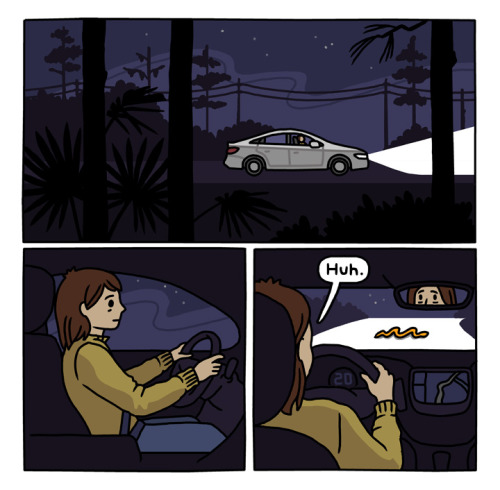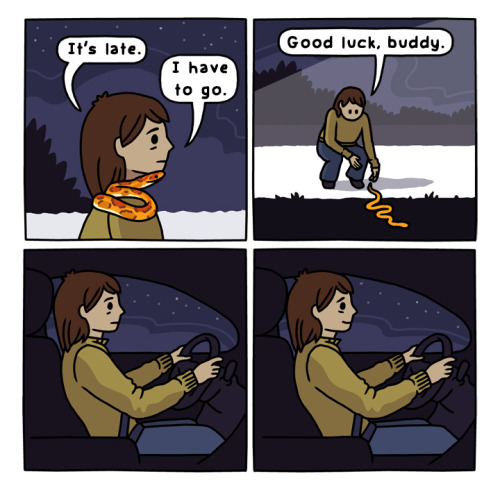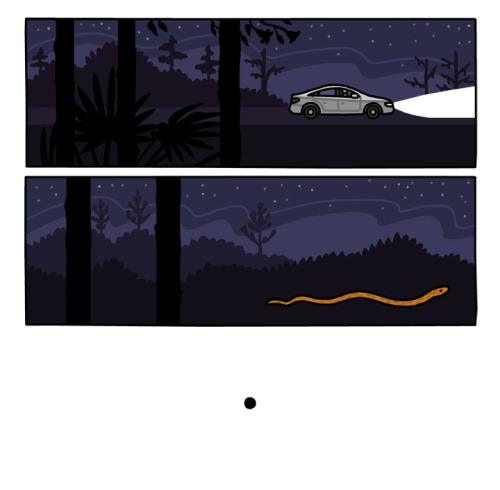Announcing The Oracle!










Alright folks, I know i’ve been rather absent since the whole Tumblr Apocalypse thing, but here’s some Proof that I haven’t just been sitting on My Ass:
Announcing The Oracle!
A couple Months back, while I was working on the Mutophage, I had the idea stroke me of trying to play DND using a Deck of Tarot Cards in place of dice. Seemed like a silly idea, but as it happens sometimes, it stuck. I had seen a few classes out there that tried to make use of a deck of tarot cards in same way. but in most cases it was something along the lines of “I play this card to cast this spell” and felt more like a TGC than like reading tarot. I wanted to make something more integral. The Oracle is My take on support-centric class. By reading and manipulating fate, they are able to change the tide of battle, granting boons to their allies, and casting certain doom on their foes. This class is built from the ground up with the intent of feeling like an actual tarot reading when played. Having read tarot for almost 15 years, I worked to make sure that everything flows naturally in the same way as an actual reading, and in a way that won’t upset your deck. In fact, I designed the class to work as a great exercise in getting to know a new deck, or just learning the essentials tarot in the first place. If you love DND, and you enjoy Reading Tarot, you should definitely give it a read.
The Previews here are missing several pages of the greater arcana, for the full PDF check out the full class using this handy dropbox link. If you like what I do and want to support me, Check out my Patreon or Ko-Fi pages, or just come say hi on my Discord!
More Posts from Skiafraylanasache and Others
Ref Recs for Whump Writers
Violence: A Writer’s Guide: This is not about writing technique. It is an introduction to the world of violence. To the parts that people don’t understand. The parts that books and movies get wrong. Not just the mechanics, but how people who live in a violent world think and feel about what they do and what they see done.
Hurting Your Characters: HURTING YOUR CHARACTERS discusses the immediate effect of trauma on the body, its physiologic response, including the types of nerve fibers and the sensations they convey, and how injuries feel to the character. This book also presents a simplified overview of the expected recovery times for the injuries discussed in young, otherwise healthy individuals.
Body Trauma: A writer’s guide to wounds and injuries. Body Trauma explains what happens to body organs and bones maimed by accident or intent and the small window of opportunity for emergency treatment. Research what happens in a hospital operating room and the personnel who initiate treatment. Use these facts to bring added realism to your stories and novels.
10 B.S. Medical Tropes that Need to Die TODAY…and What to Do Instead: Written by a paramedic and writer with a decade of experience, 10 BS Medical Tropes covers exactly that: clichéd and inaccurate tropes that not only ruin books, they have the potential to hurt real people in the real world.
Maim Your Characters: How Injuries Work in Fiction: Increase Realism. Raise the Stakes. Tell Better Stories. Maim Your Characters is the definitive guide to using wounds and injuries to their greatest effect in your story. Learn not only the six critical parts of an injury plot, but more importantly, how to make sure that the injury you’re inflicting matters.
Blood on the Page: This handy resource is a must-have guide for writers whose characters live on the edge of danger. If you like easy-to-follow tools, expert opinions from someone with firsthand knowledge, and you don’t mind a bit of fictional bodily harm, then you’ll love Samantha Keel’s invaluable handbook
Perhaps they ought not to have eaten the dragon. There had been people objecting to it at the time. Surely such meat was poisonous. Perhaps it was even an affront, an insult to some intangible order of nature they ought to honour.
But the city was starving, the siege had gone on too long, and the king's troops were still a week's march away. The scorched earth would be fertile again in time, but right now it was barren. Right now there were mouths to feed. So they changed their crossbows for butcher knives and got to work.
None of the royal commanders asked any questions that could not be answered. After all, their aid had come shamefully late. The dragon's horned skull made a noble gift, a fitting tribute from a triumphant city to its humbled king. Who would have thought to question them?
And none of the townsfolk spoke up, when the first golden-eyed babes were born. Children who grew up barefoot and fearless, clambering over the city's patched and rebuilt roofs like they had no notion of falling, with a strange glitter to their skin when the sunlight hit it just so. No one breathed a word about dragons.
Because soon enough there were deft, young hands taking loaves straight out of the oven, heedlessly lifting iron from the forge, plunging into boiling laundry water. And some of them more wondrous still, wild, warm-skinned youths, with inexplicable knowledge and peculiar remedies.
A blessing, their families said proudly. A blessing after so much hardship. Which it was, in its way. This city would never fear dragon fire again.
Are you implying there’s a difference between a jester and a god?
I feel like PM Seymour is just a god of Tumblr and if you don't know them one way, shape, or form, then you're a disappointment to Tumblr. Like if you at least know of his(?) presence then you're safe.
But if you flat out ask "Who the McFuck is PM Seymour??" then you have a mass tidal wave of Tumblr users on their way to your location. And you cannot stop them.
PM probably didn't want this to be their legacy but they are the Tumblr God.
Hit me right in the nostalgia.
What do you say “Not Alone Buddies”

One Last Time?
Writing Tips
Punctuating Dialogue
✧
➸ “This is a sentence.”
➸ “This is a sentence with a dialogue tag at the end,” she said.
➸ “This,” he said, “is a sentence split by a dialogue tag.”
➸ “This is a sentence,” she said. “This is a new sentence. New sentences are capitalized.”
➸ “This is a sentence followed by an action.” He stood. “They are separate sentences because he did not speak by standing.”
➸ She said, “Use a comma to introduce dialogue. The quote is capitalized when the dialogue tag is at the beginning.”
➸ “Use a comma when a dialogue tag follows a quote,” he said.
“Unless there is a question mark?” she asked.
“Or an exclamation point!” he answered. “The dialogue tag still remains uncapitalized because it’s not truly the end of the sentence.”
➸ “Periods and commas should be inside closing quotations.”
➸ “Hey!” she shouted, “Sometimes exclamation points are inside quotations.”
However, if it’s not dialogue exclamation points can also be “outside”!
➸ “Does this apply to question marks too?” he asked.
If it’s not dialogue, can question marks be “outside”? (Yes, they can.)
➸ “This applies to dashes too. Inside quotations dashes typically express—“
“Interruption” — but there are situations dashes may be outside.
➸ “You’ll notice that exclamation marks, question marks, and dashes do not have a comma after them. Ellipses don’t have a comma after them either…” she said.
➸ “My teacher said, ‘Use single quotation marks when quoting within dialogue.’”
➸ “Use paragraph breaks to indicate a new speaker,” he said.
“The readers will know it’s someone else speaking.”
➸ “If it’s the same speaker but different paragraph, keep the closing quotation off.
“This shows it’s the same character continuing to speak.”
You’ve been sentenced to 400 years for multiple murders. It’s been 399 years and your jailers are starting to get nervous.







A snake story, based on an experience I had while I was in Florida.
-
 rowannothere liked this · 2 weeks ago
rowannothere liked this · 2 weeks ago -
 awestrukthi reblogged this · 1 month ago
awestrukthi reblogged this · 1 month ago -
 legiterally-raven liked this · 2 months ago
legiterally-raven liked this · 2 months ago -
 darth-salem-emperor-of-earth liked this · 2 months ago
darth-salem-emperor-of-earth liked this · 2 months ago -
 sunshinefirefox liked this · 3 months ago
sunshinefirefox liked this · 3 months ago -
 adeabsoluta liked this · 3 months ago
adeabsoluta liked this · 3 months ago -
 synapticforests reblogged this · 3 months ago
synapticforests reblogged this · 3 months ago -
 synapticforests liked this · 3 months ago
synapticforests liked this · 3 months ago -
 captainsarloslog liked this · 3 months ago
captainsarloslog liked this · 3 months ago -
 heatherandlaceart liked this · 3 months ago
heatherandlaceart liked this · 3 months ago -
 thelittlestprincess7 liked this · 4 months ago
thelittlestprincess7 liked this · 4 months ago -
 biguyonline liked this · 4 months ago
biguyonline liked this · 4 months ago -
 axariel-the-fallen liked this · 4 months ago
axariel-the-fallen liked this · 4 months ago -
 acloakerwithwifi liked this · 4 months ago
acloakerwithwifi liked this · 4 months ago -
 now-panic-and-freek-out liked this · 5 months ago
now-panic-and-freek-out liked this · 5 months ago -
 annaf1sa5 liked this · 5 months ago
annaf1sa5 liked this · 5 months ago -
 taiyakidays liked this · 6 months ago
taiyakidays liked this · 6 months ago -
 crescent-celestial-knight liked this · 6 months ago
crescent-celestial-knight liked this · 6 months ago -
 mrpalmer1999 liked this · 6 months ago
mrpalmer1999 liked this · 6 months ago -
 dmekker7 liked this · 7 months ago
dmekker7 liked this · 7 months ago -
 gxlacticfox liked this · 7 months ago
gxlacticfox liked this · 7 months ago -
 tycoons-official liked this · 8 months ago
tycoons-official liked this · 8 months ago -
 claimedpsychotic liked this · 8 months ago
claimedpsychotic liked this · 8 months ago -
 titanscythe1752 liked this · 8 months ago
titanscythe1752 liked this · 8 months ago -
 fabulousfantasybird liked this · 8 months ago
fabulousfantasybird liked this · 8 months ago -
 crimson21 liked this · 8 months ago
crimson21 liked this · 8 months ago -
 curiouslitten-blog liked this · 9 months ago
curiouslitten-blog liked this · 9 months ago -
 sinnamonforsatan liked this · 9 months ago
sinnamonforsatan liked this · 9 months ago -
 bowl-o-queerios liked this · 9 months ago
bowl-o-queerios liked this · 9 months ago -
 irilenaps liked this · 9 months ago
irilenaps liked this · 9 months ago -
 starsharks reblogged this · 9 months ago
starsharks reblogged this · 9 months ago -
 deltachaos99 reblogged this · 10 months ago
deltachaos99 reblogged this · 10 months ago -
 immazrock liked this · 10 months ago
immazrock liked this · 10 months ago -
 ecobeing liked this · 10 months ago
ecobeing liked this · 10 months ago -
 army-liz liked this · 11 months ago
army-liz liked this · 11 months ago -
 savageontheside liked this · 11 months ago
savageontheside liked this · 11 months ago -
 mellowthefairy liked this · 1 year ago
mellowthefairy liked this · 1 year ago -
 jokezjoke liked this · 1 year ago
jokezjoke liked this · 1 year ago -
 profounddonutgladiator reblogged this · 1 year ago
profounddonutgladiator reblogged this · 1 year ago -
 petedtadeu liked this · 1 year ago
petedtadeu liked this · 1 year ago -
 amity206 liked this · 1 year ago
amity206 liked this · 1 year ago -
 animenerdygirl22 liked this · 1 year ago
animenerdygirl22 liked this · 1 year ago -
 snayles liked this · 1 year ago
snayles liked this · 1 year ago -
 solariusgoldenflare reblogged this · 1 year ago
solariusgoldenflare reblogged this · 1 year ago -
 fernandodemondragneel-blog liked this · 1 year ago
fernandodemondragneel-blog liked this · 1 year ago -
 pricklypearpocha liked this · 1 year ago
pricklypearpocha liked this · 1 year ago -
 hyak1nth liked this · 1 year ago
hyak1nth liked this · 1 year ago -
 cry1ng-at-m1dnight liked this · 1 year ago
cry1ng-at-m1dnight liked this · 1 year ago -
 nerochaos666-blog liked this · 1 year ago
nerochaos666-blog liked this · 1 year ago

Do you fear the Gods? Do you have the sheer arrogance, to defy them? I applaud you. This blog features: Flight Rising, Dragons, Worldbuilding, and Absolute nonsense. Have fun!
26 posts



